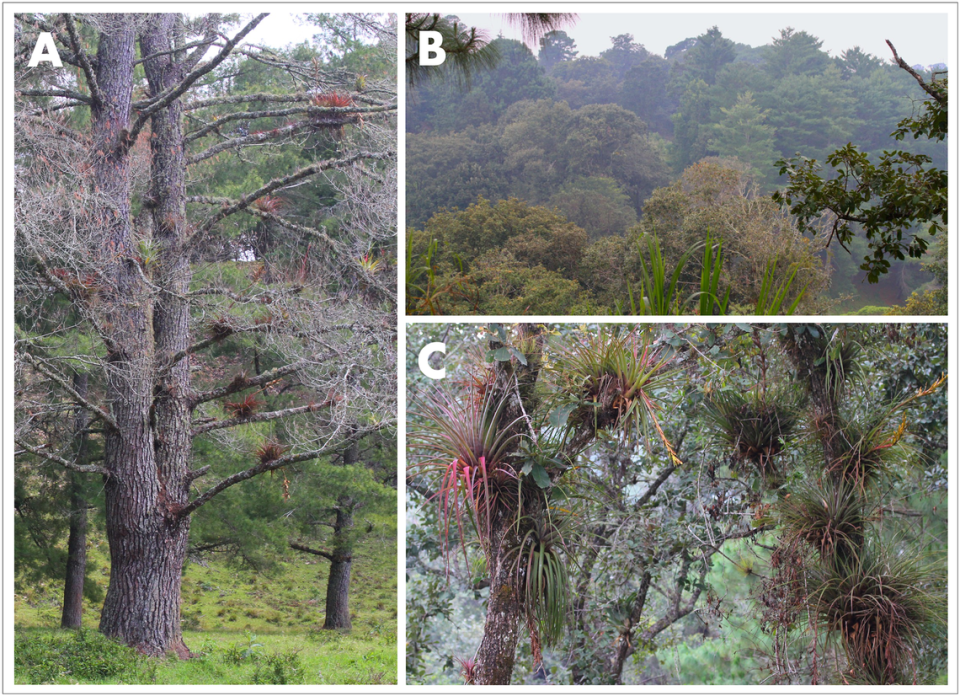Elusive ‘alligator’-like creature found in treetops of Mexico. It’s a new species
Tucked in the treetops of southern Mexico was an “alligator”-like creature. Hidden by the foliage and obscured by the height, the “unusually large” animal had generally avoided detection. When determined scientists eventually found the scaly animal, it turned out to be a new species.
The yearslong quest began after some “intriguing photographs emerged” in 2014 of a tree-dwelling lizard from Coapilla, according to a study published Jan. 3 in the journal PLOS One. Researchers searched for the elusive lizards on five expeditions between 2015 and 2022.
The search turned out to involve “extraordinary difficulty,” the study said. Researchers spent over 350 hours searching the ground and used climbing gear to search the limbs and canopy of about 20 trees.
Eventually, researchers found five of the “alligator”-like lizards, the study said. They took a closer look at the animals and realized they’d discovered a new species: Abronia cunemica, or the Coapilla arboreal alligator lizard.
Coapilla arboreal alligator lizards are “unusually large” and can reach about 9.8 inches in length, researchers said. They have yellow-brown scaly bodies covered in darker brown blotches. Their eyes are “pale yellow” with dark flecks.

Discover more new species
Thousands of new species are found each year. Here are three of our most eye-catching stories.
→ 8-eyed creature — with personality like 'Satan' — discovered
→ 'Ghost'-like creature with 'ample' genitalia found at power plant
→ 'Cryptic' 3-foot-long creature found in mangroves of Myanmar
Photos show several Coapilla arboreal alligator lizards. The lizards vary in coloring, with some being darker brown, and one has a broken tail.
Coapilla arboreal alligator lizards live in the forest canopy and were found between about 11 feet and about 64 feet up, the study said. The lizards were most often seen in the morning and afternoon. Two females who “appeared to be” pregnant were also found.
Researchers also found one pair of lizards “in a courtship bite-hold on the forest floor, after they presumably fell” from a nearby tree, the study said. The male stopped biting the female when he was captured but “re-initiated a more persistent bite hold on her head and neck” later in the day.

Coapilla arboreal alligator lizards might be “sedentary” for some portion of the year, the study said. Researchers encountered the same female lizard twice, both times within a roughly 30 foot area but 97 days apart.
Researchers said they named the new species “cunemica” after Cuñemo, the “indigenous Zoque language” name for Coapilla. The common name refers to the area where the new species was discovered.
Coapilla arboreal alligator lizards have only been found around Coapilla, the study said. Coapilla is a town in the southern state of Chiapas and about 430 miles southeast of Mexico City.
Researchers said they were “intentionally imprecise” about where the new species has been found in order to protect it.
Alligator lizards are a group of lizards only found in Central America where they live in “humid highland forests,” the study said. Most of these lizards are “mysterious” and rarely seen due to their “cryptic behavior” and limited distribution areas.
The research team included Adam Clause, Roberto Luna-Reyes, Oscar Mendoza-Velázquez, Adrián Nieto-Montes de Oca and Israel Solano-Zavaleta.
‘Aggressive’ creature of the night found lurking on fences in China. It’s a new species
‘Robust’ creature — found ‘guarding’ eggs under moss on ‘sky island’ — is new species
‘Giant’ creature with ‘finger’-like genitalia found in Tanzania. It’s a new species


